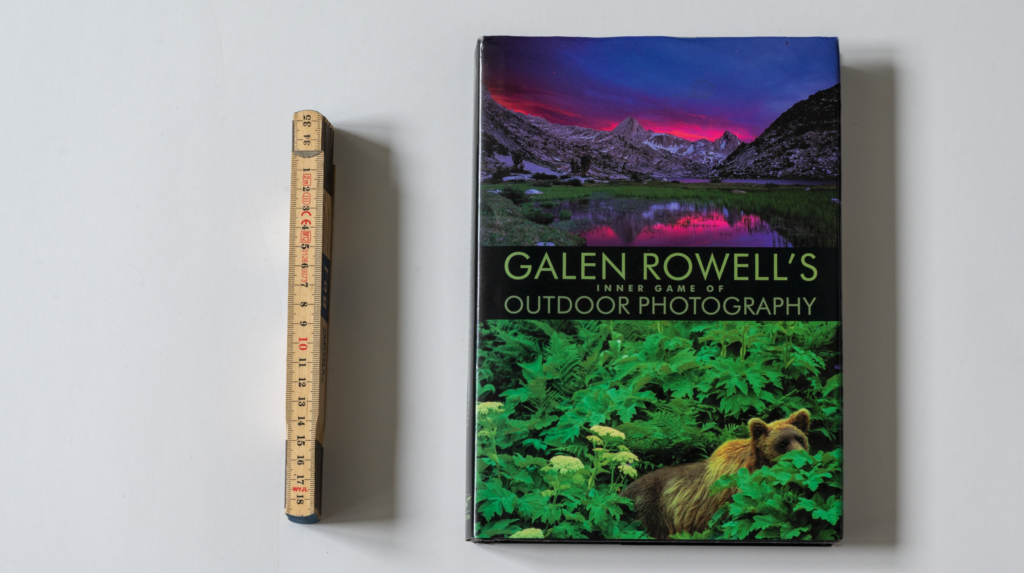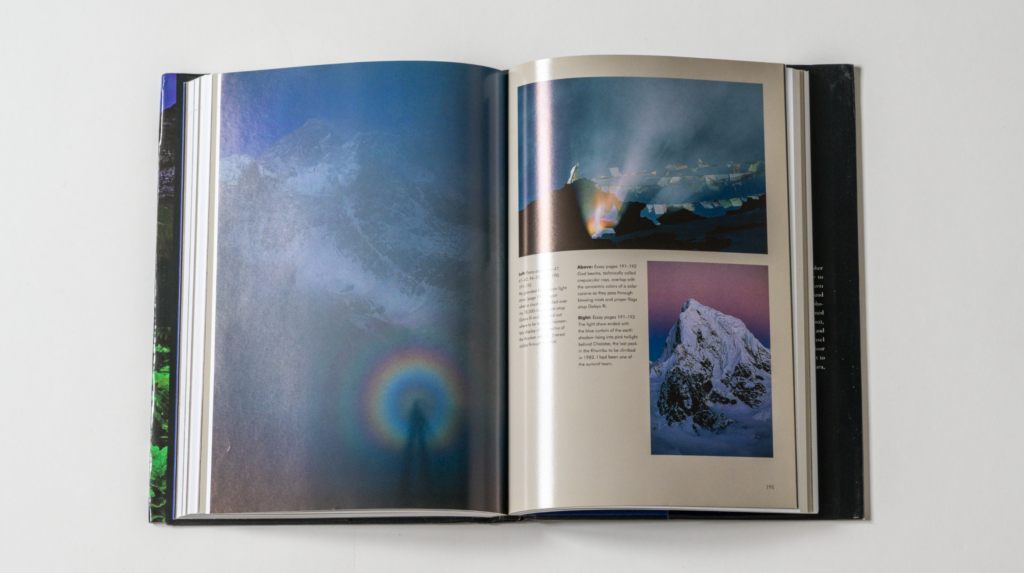Imagine a job add where you would ask for someone who is (1) a master mountain climber, (2) an outstanding and engaging author and (3) one of the best outdoor photographers with 40+ years of experience. And add to that that travel experience requirements is to have travelled all 7 continents and both poles! Do you think someone from HR would let you publish such an add? Nah. They would probably tell you such person does not exist. But such person actually did exist in the shape of Galen Rowell.
Asking a photographer what model of camera he uses is like asking a writer what type of typewriter he uses. Galen Rowell.

Galen
According to wikipedia, Galen Rowell was born in 1940 and died in a plane crash in 2002. The inner game of outdoor photography was published in 2001. So Galen has probably written a some of the book quite late in his life. Other parts of the book is based upon essays previously published in the Outdoor Photographers Magazine.
Especially in the first of the 4 parts of the book, Galen strikes me as a very well read person who is not afraid of taking a big step back and looking at things from the outside in. My guess is that he has learned this from his father, being a philosopher, but it is of course a guess. The philosophical angle runs as a red thread throughout the book, and to me this is an additional dimension to the book that I really enjoy.
The medium may not be the message, but it sure can make a big difference. Galen Rowell.
Inner game of outdoor photography
The book contains 66 essays or small chapters, varying from 2-5 pages, and blended with the text comes more than 140 colour photographs that illustrates the essays. The 4 sections are:
- Visions: creative and cognitive processes
- Preparations: equipment, film and technique
- Journeys: merging visions with realities and
- Realisations: communicating your worldview through photography
You can tell that the book is 20+ years old today when Galen talks about pushing the ISO on the film or how to get the weight of his gear reduced as much as possible e.g. using the Nikon F65. Also, towards the end of the book he talks about scanning and enhancing the 35mm film digitally, which also shows that the book was published at the brink of the digital revolution. It is also interesting how some of the readers of the Outdoor Photographers Magazine have sent letters (!) as part of a debate about outdoor photography! I think today that would have been settled via social media.

But despite the book clearly being 20+ years old, the vast majority of the content is as relevant today as it was back when he wrote it.
The format is excellent – the chapters / essays are so short that you can read them rather quickly and independent of each other. Just like a step-calendar leading up to Christmas.
The best photographers know better than to try to lead others all the way down their inner path, because the act of following someone else’s, instead of discovering your own, will eventually be self defeating. Galen Rowell.
The first part of the book is the most abstract and philosophical talking about cognitive processes and the meaning of photography. The second part takes a big swing the other way and becomes very operational and hands-on and how-to use flash and push film and make your backpack as light as possible. Third part is enjoyable stories from all his travelling around the globe and the final part again zooms out and looks more at the photography industry and the relationship between man and nature. And every section of the book is really well written and a joy to read – provided of course that the outdoors and outdoor photography is close to your heart.
Conclusion
I am really happy that I got to read this book. And I think I will read especially part 1 several times. I feel this book has given me the privilege to look over the shoulder of an exceptional photographer, one that has travelled the world and seen things I will never get to see. And alone for that reason, I can highly recommend this book for any outdoor photographer. Despite some sections being dated obviously.
Consistently creative photography requires learning to bridge the chasm between and engineer’s technical mastery and a blind monkey’s unselfconscious intuition. Galen Rowell.
The book also leaves me a bit sad. Galen was killed in a plane accident, and I cannot help thinking how much experience and knowledge that was lost in that incident. How many of those funny little stories that this book is filled with did Galen have on stock that he just did not have an opportunity to tell? Today he would have been well into his 80ties and I envision an old man sitting by the campfire telling stories from his long life to his grandchildren and any young photographer that drops by. But obviously that vision will never materialise and this book is as close as we will ever get.
Many have made me aware that Thom Hogan in this blog post has described his relationship to Galen Rowell and what Galen meant to him as a mentor and a friend. I highly recommend that you read Thom’s blog if you want to learn more about Galen and his work and influence.
Practical note
I live in Europe and copies of this book does not come easy. I ordered a used copy via Amazon and it took a month (!) for it to arrive. I ordered a copy in UK, but apparently the supply chain started in US, which explains the long wait for it to arrive. So should you decide to buy a copy you may find that a bit of patience is required.
Related reading
Review: Ernst Haas by Photofile
Review: Saul Leiter In My Room, Edited by Margit Erb and Robert Benton
